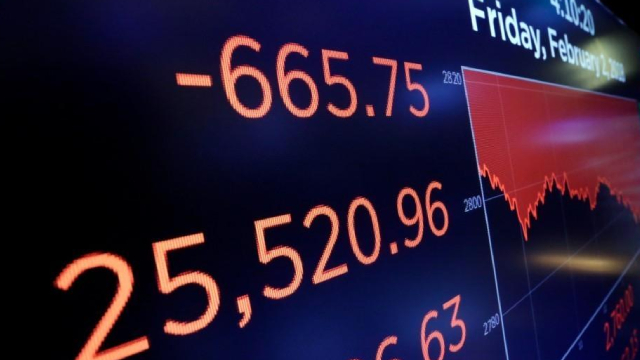ETF Outflows: A Response to Market Volatility and Tariff Fears
The year 2023 has seen a noteworthy trend in Exchange-Traded Funds (ETFs), with numerous funds experiencing significant outflows. This development can be attributed to a perfect storm of market volatility and escalating tariff fears.
Market Volatility: A Catalyst for ETF Outflows
The stock market has been on a rollercoaster ride in recent months, with the S&P 500 experiencing double-digit swings. This heightened volatility has left many investors feeling uneasy, leading them to reconsider their investment strategies. ETFs, which are known for their liquidity and ease of trading, have become an attractive option for those looking to reduce their exposure to the market.
Tariff Fears: A Driving Force Behind the Rotation
Tariffs have long been a contentious issue in international trade, but recent threats of escalating tariffs between major economies have investors on edge. The potential for a trade war could negatively impact global economic growth, leading many to seek out defensive investments. ETFs that focus on sectors such as healthcare, utilities, and consumer staples have seen inflows as investors look for stability in a volatile market.
Impact on Individual Investors
For individual investors, the trend towards ETF outflows may present both opportunities and challenges. On the one hand, it could create buying opportunities in undervalued ETFs. On the other hand, it could lead to increased competition and lower liquidity in certain ETFs, making it more difficult to execute large trades.
- Keep an eye on ETFs that have experienced significant outflows, as they may offer attractive buying opportunities.
- Consider diversifying your portfolio by investing in a range of ETFs across different sectors and asset classes.
- Be prepared for potential market volatility and liquidity issues in certain ETFs.
Impact on the World
The trend towards ETF outflows is not just an isolated phenomenon; it has far-reaching implications for the global economy. For instance, it could lead to a decrease in overall market liquidity, making it more difficult for institutions to execute large trades. It could also impact the pricing of certain assets, as ETFs are often used as benchmarks for index funds and other investment vehicles.
Moreover, the trend towards defensive investments could have implications for specific sectors and industries. For example, the healthcare sector, which has seen significant inflows, could benefit from increased demand for its products and services.
Conclusion
The trend towards ETF outflows is a response to market volatility and tariff fears, and it has implications for both individual investors and the global economy. By staying informed and diversifying their portfolios, investors can navigate this trend and position themselves for potential opportunities. Meanwhile, policymakers and industry leaders will need to work together to address the underlying causes of market volatility and tariff fears, in order to promote stability and growth in the global economy.
As always, it’s important to remember that investing involves risk, and there are no guarantees of success. Consult with a financial advisor or investment professional before making any investment decisions.





